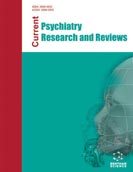
Abstract
Background: Serotonin is a neurotransmitter that regulates neuronal activity and a variety of cognitive functions, and medicines that target serotonin receptors are frequently utilized in psychiatry and neurology. Clinical and preclinical research on the role of serotonin in major depressive disorder is growing. These findings demonstrate the intricacy of serotonin transmission across multiple receptors, in a variety of brain areas, and across the lifespan. The serotonin transporter's significance in major depressive disorder has been highlighted in geneenvironment association studies, as well as its participation in the mechanism of the most successful antidepressant medications, selective serotonin reuptake inhibitors. While most of the 15 known serotonin receptors have been linked to depression or depressive-like behaviour, the serotonin 1A (5-HT) and 1B (5-HT) receptors have received the most attention.
Objectives: The primary goal of this study is to review the antidepressant effect of herbal medications by modifying serotonin receptors in the future.
Result: Human brain imaging and genetic studies suggest that 5-HT and 5-HT receptors play a role in major depressive disorder and antidepressant treatment response. The availability of tissue-specific and inducible knockout mice lines in rodents has allowed for the detection of 5- HT and 5-HT receptor involvement throughout development and in cell-type specific ways. It may be found that herbal drugs will be effective as the serotonin reuptake inhibitors.
Conclusion: This and other future preclinical pharmacology studies show that these receptors' autoreceptor and heteroreceptor populations play different roles in modulating depressionrelated behaviour and antidepressant responses, as well as having different functions during early postnatal development versus adulthood. According to analysis of our research findings, alkaloids may have some therapeutic promise as natural antidepressants. Given their widespread distribution in nature, alkaloids might be a cheap way to treat depression.
[http://dx.doi.org/10.1038/nature07455] [PMID: 18923511]
[http://dx.doi.org/10.1001/archpsyc.1975.01760270019001] [PMID: 241308]
[http://dx.doi.org/10.1016/0091-3057(95)02135-3] [PMID: 8728550]
[http://dx.doi.org/10.1002/1520-6394(2000)12:1+<2:AID-DA2>3.0.CO;2-4] [PMID: 11098410]
[http://dx.doi.org/10.1016/S0140-6736(96)07495-8] [PMID: 9164317]
[http://dx.doi.org/10.1176/appi.ajp.161.4.598] [PMID: 15056502]
[http://dx.doi.org/10.1093/brain/awf149] [PMID: 12076995]
[http://dx.doi.org/10.1016/j.psychres.2006.04.013] [PMID: 17296234]
[http://dx.doi.org/10.1111/j.1527-3458.2005.tb00268.x] [PMID: 16007238]
[http://dx.doi.org/10.2174/1381612820666140826114601] [PMID: 25159073]
[http://dx.doi.org/10.1159/000119288] [PMID: 8884757]
[PMID: 30093956]
[PMID: 28413992]
[http://dx.doi.org/10.1007/s00280-015-2924-3] [PMID: 26666648]
[http://dx.doi.org/10.1007/s12011-009-8550-3] [PMID: 19902161]
[http://dx.doi.org/10.4103/0973-1296.196309] [PMID: 28216895]
[http://dx.doi.org/10.1111/j.1365-2125.1980.tb04806.x] [PMID: 7356869]
[http://dx.doi.org/10.1016/j.ejpb.2012.11.025] [PMID: 23238273]
[http://dx.doi.org/10.1016/S0021-9258(18)57137-4] [PMID: 18100415]
[http://dx.doi.org/10.3109/10401239409148985] [PMID: 7804391]
[http://dx.doi.org/10.1615/CritRevNeurobiol.v16.i4.10] [PMID: 15862107]
[http://dx.doi.org/10.1053/j.gastro.2006.11.002] [PMID: 17241888]
[http://dx.doi.org/10.1016/0306-4522(91)90128-B] [PMID: 1851255]
[http://dx.doi.org/10.1038/nrn1429] [PMID: 15208696]
[http://dx.doi.org/10.1002/0470010703.ch9] [PMID: 16206878]
[http://dx.doi.org/10.1007/s00441-005-1112-x] [PMID: 15947971]
[http://dx.doi.org/10.1523/JNEUROSCI.18-23-10150.1998] [PMID: 9822768]
[http://dx.doi.org/10.1016/j.bbr.2008.02.023] [PMID: 18394726]
[http://dx.doi.org/10.1016/S0006-8993(02)03477-7] [PMID: 12419546]
[http://dx.doi.org/10.1038/jcbfm.2014.82] [PMID: 24802331]
[http://dx.doi.org/10.1111/j.1600-0447.1991.tb05574.x] [PMID: 1882697]
[http://dx.doi.org/10.1016/j.euroneuro.2012.11.005] [PMID: 23434290]
[http://dx.doi.org/10.1176/appi.ajp.163.1.52] [PMID: 16390889]
[http://dx.doi.org/10.1038/mp.2009.126] [PMID: 19935737]
[http://dx.doi.org/10.1002/syn.21684] [PMID: 23720414]
[http://dx.doi.org/10.1038/mp.2012.93] [PMID: 22751491]
[http://dx.doi.org/10.1038/npp.2009.54] [PMID: 19458612]
[http://dx.doi.org/10.1016/0006-3223(92)90106-A] [PMID: 1420642]
[http://dx.doi.org/10.1136/pgmj.52.605.156] [PMID: 1264939]
[http://dx.doi.org/10.1016/0165-1781(79)90002-7] [PMID: 95233]
[http://dx.doi.org/10.1111/j.1600-0447.1984.tb02488.x] [PMID: 6201041]
[http://dx.doi.org/10.1038/npp.1994.23] [PMID: 7916918]
[http://dx.doi.org/10.4088/JCP.13r08908] [PMID: 25295433]
[http://dx.doi.org/10.1038/nrn1256] [PMID: 14618156]
[http://dx.doi.org/10.1126/science.1123432] [PMID: 16873667]
[http://dx.doi.org/10.1038/mp.2011.159] [PMID: 22158014]
[http://dx.doi.org/10.1038/nature09629] [PMID: 21179162]
[PMID: 11082448]
[http://dx.doi.org/10.1097/FBP.0b013e3282f3cfd4] [PMID: 18195592]
[http://dx.doi.org/10.1038/mp.2014.153] [PMID: 25403840]
[http://dx.doi.org/10.1016/j.neuron.2007.07.041] [PMID: 17785179]
[http://dx.doi.org/10.1523/JNEUROSCI.2806-03.2004] [PMID: 14724239]
[http://dx.doi.org/10.1111/j.1749-6632.1998.tb10177.x] [PMID: 9928243]
[http://dx.doi.org/10.1016/S0893-133X(99)00044-5] [PMID: 10432491]
[http://dx.doi.org/10.1016/j.neuropharm.2004.11.015] [PMID: 15755477]
[http://dx.doi.org/10.1016/j.pharmthera.2006.11.006] [PMID: 17303246]
[http://dx.doi.org/10.1016/j.pneurobio.2011.05.009] [PMID: 21723912]
[http://dx.doi.org/10.1016/j.neuron.2012.08.038] [PMID: 23040817]
[http://dx.doi.org/10.1177/0269881113480988] [PMID: 23518815]
[http://dx.doi.org/10.1007/s00441-006-0285-2] [PMID: 16896948]
[http://dx.doi.org/10.1371/journal.pone.0146470] [PMID: 26785258]
[http://dx.doi.org/10.3389/fnsyn.2016.00025] [PMID: 27616990]
[http://dx.doi.org/10.1016/0165-1781(92)90027-Z] [PMID: 1289921]
[http://dx.doi.org/10.1016/S0006-3223(02)01728-6] [PMID: 12586450]
[http://dx.doi.org/10.1046/j.1471-4159.1999.0720282.x] [PMID: 9886080]
[http://dx.doi.org/10.3109/10253890.2012.708951] [PMID: 22746337]
[http://dx.doi.org/10.1038/mp.2014.163] [PMID: 25486982]
[http://dx.doi.org/10.1002/bies.201300086] [PMID: 24003004]
[http://dx.doi.org/10.1073/pnas.1305814110] [PMID: 23671070]
[http://dx.doi.org/10.31887/DCNS.2008.10.3/dnutt] [PMID: 18979946]
[http://dx.doi.org/10.1073/pnas.97.1.325] [PMID: 10618417]









